In this piece, originally published by The National Interest, Robert Einhorn argues that a compromise resolution to concerns about Iran’s past nuclear activities will not undercut efforts, enshrined in the July 2015 comprehensive nuclear deal, to prevent Iran from acquiring nuclear weapons capability.
With the International Atomic Energy Agency days away from issuing its “final assessment” regarding the “possible military dimensions” (PMD) of Iran’s past nuclear activities, this long-running issue will soon come to a head. The outcome will almost surely be messy and inconclusive, not pleasing to any of the parties concerned. It will provide ammunition to American and Iranian opponents of the Iran nuclear deal, which was concluded in July between Iran and the P5+1 group of states. But the resolution — or, more accurately, non-resolution — of the PMD issue, as unsatisfactory as it is likely to be, will not undermine the case for proceeding with the agreement.
The finale of the PMD controversy has been a long time coming. In November 2011, IAEA Director General Yukiya Amano issued a detailed report — based on “overall credible” information from a “wide variety of independent sources” and the Agency’s own investigations — which concluded that, at least until 2003 and possibly beyond, “Iran has carried out activities relevant to the development of a nuclear explosive device.”
In the years following the report, the IAEA actively sought to gain a better understanding of those activities, but its efforts were stymied by Iranian stonewalling and obfuscation. Tehran repeatedly claimed that the evidence on which the IAEA was relying was fabricated and based on forgeries. It denied that Iran was ever interested in nuclear weapons or that it had engaged in nuclear weapons-related research and experimentation.
Meeting the PMD requirement for sanctions relief
In July this year, as the P5+1 and Iran were reaching the final stage of negotiations on the nuclear deal — called the Joint Comprehensive Plan of Action (JCPOA) — the IAEA and Iran agreed on a “roadmap” containing the steps Iran would need to take to give the Agency a sufficient basis to prepare a final assessment of the PMD issue which, according to the JCPOA, would be issued by December 15. On October 15, the IAEA announced that the activities required by the roadmap had been completed by Iran.
What was not widely recognized at the time is that, under the JCPOA, the suspension of sanctions against Iran does not depend on Iran fully and honestly disclosing to the IAEA its past nuclear-related activities. Neither does it depend on the IAEA reaching a definitive conclusion in its December report that previous activities were not weapons-related or that no weapons-related activities were continuing. Instead, the PMD prerequisite for sanctions relief (as distinguished from other JCPOA-mandated prerequisites, such as removal of excess centrifuges and reduction in enriched uranium stocks) is simply that Iran fulfill the formal requirements of the roadmap — including supplying additional information, holding “technical-expert meetings” with IAEA officials, and providing access to some locations.
Now that the IAEA has certified that Iran has met those requirements and that the Agency therefore has a sufficient basis to complete its December PMD report, the PMD-related condition for sanctions relief has already been met, whatever the December report may say or whatever reaction the IAEA Board of Governors may have to the report.
We will learn very shortly what the IAEA report says. But with Iran reportedly having cooperated only minimally under the roadmap and continuing to deny that it ever engaged in nuclear weapons-related activities, it seems very likely that the report will be inconclusive. The report may state that, while the Agency has discovered no evidence that weapons-related activities are continuing, it cannot conclude that past activities were not weapons-related. Far from giving Iran a clean bill of health, the report may indicate that the questions and concerns outlined by the IAEA in November 2011 have not been resolved.
An IAEA Board resolution to “close” the PMD issue
Especially because the report will not clear their name and will leave past questions unanswered, the Iranians will press hard for an IAEA Board resolution that would put the PMD issue behind them once and for all. At their insistence, the JCPOA commits the P5+1 countries to submit a resolution on the PMD issue to the IAEA Board “with a view to closing the issue.” But Iran and several of the P5+1 states may have very different views of what it means to “close” the issue.
Iran can be expected to aim for a Board resolution that supports its narrative that it never engaged in nuclear weapons-related work — and specifically that terminates the Agency’s investigation of its past activities, cancels previous Board resolutions on the issue, reduces the prominence of the Iran issue on future Board agendas, and perhaps even precludes the reopening of PMD issues in the future.
Far from giving Iran a clean bill of health, the report may indicate that the questions and concerns outlined by the IAEA in November 2011 have not been resolved.
The United States and its European P5+1 partners will want the Board resolution to reflect that the concerns identified in the IAEA’s November 2011 report have not been allayed. They will oppose any attempt to whitewash Iran’s record, to preclude the reopening of past issues whenever warranted, or to exclude unresolved issues from the Agency’s consideration of its so-called “broader conclusion” as to whether Iran’s program is devoted exclusively to peaceful purposes — a judgment the IAEA seeks to make in the case of all parties to the IAEA Additional Protocol.
In an effort to pressure the P5+1 to close the PMD issue in a manner they favor, the Iranians have raised the stakes. In an October 21 letter to President Hassan Rouhani endorsing the JCPOA and providing guidance on implementing it, Supreme Leader Ali Khamenei declared that key Iranian nuclear implementation tasks — including reducing enriched uranium stocks and re-designing the Arak reactor — will only begin after the IAEA has closed the dossier on past and present issues.
But the Iranians are unlikely to continue linking implementation of their nuclear commitments to the closure of the PMD issue, especially to an overreaching definition of closure that would hold them blameless for past activities and prevent unresolved questions from being taken in account in future assessments of the nature of their nuclear program. They know that if they continue to link performance of their nuclear commitments to an unreasonable definition of closure and therefore block agreement on a Board resolution, then “implementation day” and the suspension of sanctions will be delayed. With President Rouhani and his supporters hoping that early sanctions relief will give Iranian moderates a boost in the February Majlis elections, it is unlikely they would risk a stalemate on “closing the file” at the IAEA Board meeting.
In the end, given the importance all parties attach to successful implementation of the JCPOA, the IAEA December Board is likely to reach agreement on a compromise resolution. Such a resolution might formally declare the longstanding IAEA investigation of past activities to be terminated. But at the same time, it could direct the Agency to rigorously monitor the JCPOA’s prohibitions on nuclear weapons-related activities, recognize that past issues can be reopened if new information comes to light, and make clear that questions about possible nuclear weapons-related activities, past or present, are relevant to considering the Agency’s “broader conclusion.” Just as previous UN Security Council resolutions on Iran were replaced by a new Council resolution, previous IAEA Board resolutions could be replaced by a new resolution that, together with other Board guidance, could ensure that the Agency has a strong mandate and the necessary legal authorities to monitor possible weaponization activities going forward.
Iranian critics will charge that such a compromise resolution does not sufficiently put an end to the PMD issue, while American critics will contend that it does not sufficiently hold Iran accountable for its past nuclear weapons work.
Sanctions relief without an Iranian confession
A few months later, when Iran completes the other steps required for “implementation day,” most U.S., E.U, and United Nations sanctions will be suspended. This may come as an unpleasant surprise to American observers, many of whom probably assumed that sanctions relief would depend on Iran credibly disclosing its past activities, not simply fulfilling the undemanding, largely procedural requirements of the “roadmap.” Critics can be expected to attack the JCPOA anew for permitting sanctions to be relieved despite the December IAEA report having concluded that Iran has not made a full accounting of its past nuclear work.
Their reaction is understandable. The U.S. government, several other governments, and many IAEA professionals remain convinced — on the basis of highly credible information available to them — that Iran, at least until 2003 and possibly beyond, had a systematic and officially approved program of research, procurement, and experimentation aimed at developing nuclear weapons.
When the IAEA released its November 2011 report outlining its PMD concerns in great detail, the Iranians could have opted for a defense along the lines suggested by former Iranian President Akbar Hashemi Rafsanjani in a recent interview that other members of Iran’s elite must have regarded as decidedly off-message. Rafsanjani stated that, during the Iran-Iraq war in the 1980s when Iran’s nuclear program began, Iranian officials were thinking about acquiring a deterrent capability. He is quoted as saying that “we were at war and we sought to have that possibility for the day the enemy might use a nuclear weapon. That was the thinking. But it never became real…Our basic doctrine was always a peaceful nuclear application, but it never left our mind that if one day we should be threatened and it was imperative, we should be able to go down the other path.”
Most Western audiences would not have regarded such a defense as entirely complete or truthful. But an explanation along those lines — that Iran had seriously considered but ultimately rejected nuclear weapons — could at least have been a face-saving way for Iran to acknowledge past activities and cooperate with the IAEA’s investigation, while at the same time continuing to deny that it had ever taken a decision to acquire nuclear arms.
Iran’s leaders decided not to go that route. Instead, they opted for the Big Lie — that Iran was never interested in nuclear weapons and that evidence of past nuclear weapons-related activities was fabricated as part of a conspiracy to discredit, sanction, and ultimately bring down the Islamic Republic. It is a tribute to Tehran’s skillful public diplomacy and propaganda efforts — especially after the departure of President Ahmadinejad and arrival of President Rouhani and his team — that much of the world no longer pays attention to the IAEA’s November 2011 report and has forgotten Iran’s well-documented record of cheating on its nonproliferation obligations. To many countries, especially among the non-aligned group, Iran has successfully portrayed itself as the aggrieved party — a victim of false accusations who has had to endure a manufactured crisis.
It is a tribute to Tehran’s skillful public diplomacy and propaganda efforts — especially after the departure of President Ahmadinejad and arrival of President Rouhani and his team — that much of the world no longer pays attention to the IAEA’s November 2011 report and has forgotten Iran’s well-documented record of cheating on its nonproliferation obligations.
In the wake of the IAEA PMD report, the Board resolution, and “implementation day,” a number of observers will be disturbed that Iran appears to be getting away with the Big Lie — benefiting from sanctions relief while stonewalling the international community on its past nuclear weapons-related work. We can expect objections to giving away the sanctions leverage that provides the only plausible means of getting Iran to address past activities seriously. Some critics may call for withholding sanctions relief, or imposing new sanctions, until Iran makes a credible disclosure about the past.
So the likely outcome of the PMD issue will be untidy, to say the least. It will leave many past issues unresolved. It will fall short of how many observers expected the matter to be concluded. It will result in renewed criticism of the nuclear deal.
Is an Iranian confession necessary?
Should this unsatisfying PMD outcome affect our basic evaluation of the deal? In particular, will Iran’s failure to disclose its past activities be a serious impediment to gaining confidence that Tehran is not pursuing nuclear weapons-related work in the future?
These questions will be hotly debated. But given the range of tools at our disposal for deterring and detecting Iranian non-compliance, Iran’s unwillingness to come clean about the past does not represent a critical shortcoming.
The JCPOA provides significant tools to prevent future weaponization activities. It goes beyond the Nonproliferation Treaty by explicitly prohibiting specific activities related to nuclear weapons development, such as nuclear explosive modeling and research on explosive detonation and neutron initiation systems. In addition, the consensus procedure for the JCPOA’s procurement channel, together with Security Council restrictions on importing sensitive technologies, will impede possible efforts to acquire materials and equipment relevant to weaponization.
Deterring and detecting weaponization, however, will not depend entirely or even primarily on the JCPOA. National intelligence capabilities, mainly those of the United States and its foreign partners, will play a critical role. Indeed, such intelligence capabilities provided crucial information about Iran’s previous nuclear weapons work.
These questions will be hotly debated. But given the range of tools at our disposal for deterring and detecting Iranian non-compliance, Iran’s unwillingness to come clean about the past does not represent a critical shortcoming.
It is sometimes argued that full Iranian disclosure is essential to designing an effective JCPOA monitoring system. But the provisions of an agreement that could be most effective in monitoring small-scale weaponization activities would be more intrusive than any sovereign state would be willing to accept (e.g., keeping close track of all scientists with the necessary expertise; on-site verification of all equipment in the country that could be used in nuclear weapons design and diagnostics). With or without full knowledge of past Iranian activities, it would have been nearly impossible to reach agreement on such intrusive arrangements.
That is why deterring weaponization must depend less on agreed monitoring measures and more on national intelligence capabilities, procurement restrictions, and the threat of strong penalties for non-compliance. Moreover, the production of nuclear weapons-usable material is the critical pacing factor in any nuclear weapons program, not experience with weaponization, and the JCPOA provides reliable means of detecting the production of such nuclear materials.
Another argument for insisting on full disclosure is that it would indicate how much progress Iran had made on weaponization and that such information would be crucial in calculating how much time would be available to intervene to stop any future Iranian attempt to break out and build nuclear weapons. But from its own sources, the United States already has considerable knowledge of past Iranian nuclear weapons work. And in any event, in calculating how much time it would have to thwart an Iranian breakout, the United States would have to make the conservative assumption that Iran had made substantial headway in weaponization and would not require much time to proceed from the production of fissile material to the fabrication of a weapon. It is unlikely that anything the Iranians might say about past weaponization efforts would affect U.S. planning to stop an Iranian breakout, especially because whatever they said would hardly be taken at face value.
The strongest argument for insisting on full Iranian disclosure is that the admission of a previous intention to develop nuclear weapons would provide a measure of confidence that Iran had genuinely made a strategic decision to abandon the ambition of becoming a nuclear-armed state. But such a confession — which would contradict Tehran’s core narrative that its nuclear program has always been peaceful as well as the Supreme Leader’s fatwa that Islam forbids nuclear weapons — was never in the cards.
While a truthful confession would be valuable, it is not necessary for a sound agreement. More important than hearing Iran’s version of the past is having confidence that nuclear weapons will not be pursued in the future. With rigorous implementation of the JCPOA’s unprecedented monitoring measures, strict enforcement of compliance, enhanced intelligence gathering, and a credible threat of forceful intervention to thwart any breakout attempt, it will be possible to prevent Iran from acquiring nuclear weapons, despite Iran’s failure to come clean about the past and the absence of a more definitive and satisfying conclusion of the PMD issue than what will unfold in coming days and weeks.

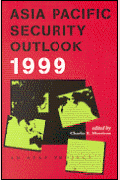
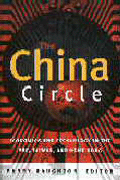
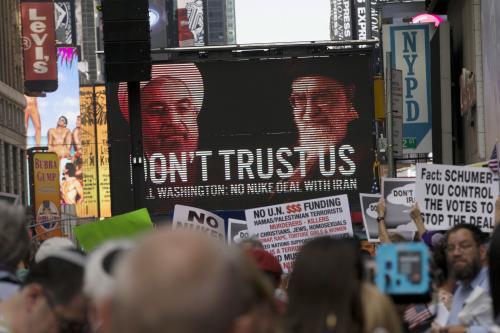
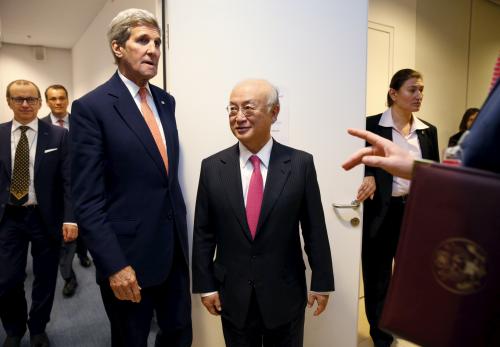
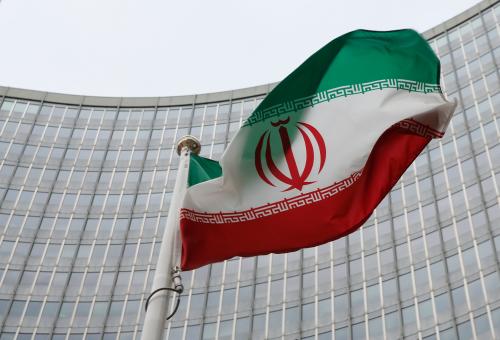




Commentary
An unsatisfying outcome on Iran’s past nuclear activities is no reason to derail the nuclear deal
December 1, 2015